Planning a trip to Barcelona in Spain? I’ve put some Barcelona itineraries together for four days in the city or more but of course, you can also use them to get inspiration for a day itinerary if you’re going for just a quick trip.
Top tip: If you plan on visiting lots of sights, consider getting the Barcelona Card. It gives you access to over 25 museums and attractions as well as free use of Barcelona’s public transportation system.If you’re not planning on visiting many paid sites, the transportation card is a better option.
Contents
Barcelona itineraries for four days in Barcelona to one week in Barcelona
The following is an itinerary for 4 days in Barcelona, including some extra tips in case you want to stay a week in Barcelona. If you only want to spend 3 days in Barcelona or less, you can drop a day from the itinerary or create your own new itinerary by picking and choosing.
One week in Barcelona: Day 1
The Gothic Quarter
If you want to understand Barcelona’s cultural heritage you need to take a trip to its Gothic Quarter. In fact, the Gothic Quarter is basically a day trip in and of itself. One of the most notable attractions in the Gothic Quarter is the Barcelona Cathedral, which looks like something straight out of an old vampire movie. Not to be confused with the Sagrada Familia, the Cathedral is worth checking out before you explore the rest of the area.
Those with an interest in history might be interested in tracing the footsteps of the Jewish community that made its home in this quarter for centuries. This dark history can be uncovered by following the Sant Domenec del Call street and investigating the synagogues and museums that line it and its surrounding streets. You’ll also pass by Gaudi’s famous street lamps and Picasso’s art school.
When the sun sets, this neighborhood comes alive as people take to the streets to eat al fresco and drink in the warm evening air. There are dozens of restaurants, with tables spilling out into the streets and endless bars serving sangria to thirsty tourists and locals alike.
Head down towards the port for some of the city’s finest late-night haunts. Many of the venues keep the music pumping and the drinks flowing until the early hours.
La Rambla
You’ve probably heard of La Rambla – if you have it is probably because someone you know was pickpocketed there. I will preface this section by saying that La Rambla is a must-visit while you’re in Barcelona. However, it does have a not undeserved reputation for being rife with pickpocketers. Leave your valuables at the hostel or keep a close eye on them while you’re there and you’ll be fine.
Now that warning is out of the way, let’s focus on why La Rambla is one of the highlights of Barcelona. For starters, the 1.2km promenade pulses with life no matter what time of day you visit. It is lined with street sellers hawking their trinkets and slightly unnerving human statues performing for loose change. It is an eclectic space with brilliant energy and all the best city itineraries will make time to explore it.
If you’re a fan of sex and all things sexy (let’s be honest, who isn’t) you might want to dip into the Erotic Museum. Entry is discounted if you have the Barcelona Card and it is good fun to look round for an hour or two before carrying on your journey through Barcelona.
Alternatively, stay outside and enjoy everything La Rambla has to offer in the open air. Keep your eyes peeled for bits of art scattered across the promenade, including the Miró Mural that spreads across the floor.
Mercado de la Boquería
I honestly cannot express how much I enjoy markets. There’s just something about them that I find utterly enthralling and I know I’m not alone in this. La Boqueria is Barcelona’s finest and most exciting market and if you have the time, money, and energy you could easily spend hours here exploring every nook and cranny.
However, if you are planning on sticking to one of my chock-a-block itineraries, you should limit yourself to a couple of hours here. But, that’s more than enough to enjoy everything it has to offer.
This enormous, sprawling market sells everything you need for the ultimate gastronomic experience. You can pick up fresh produce, including mouth-watering cheeses, fish and charcuterie that are specific to the region. You’ll also find plenty of fruits and vegetables adding to the explosion of color that defines this market. If you’ve got a kitchen in your accommodation, stock up on food here and whip up something delicious back home.
However, if you came to Barcelona to escape the mundanity of everyday life and refuse to cook on your vacation, never fear. There are plenty of street food stands throughout the market where you can get just about everything, from enormous olives to a paper cone filled with world-class jamón. Wash it all down with a glass of wine and you’re on to a real winner.
El Raval
The area of the city in which you will find La Rambla and La Boqueria is El Raval. In equal parts fascinating and seedy, this rapidly gentrifying part of the city has long been a source of controversy. It was once a no-go zone for tourists, who dubbed it too dangerous to visit due to it being rife with drug dealers and prostitutes.
Today, it is almost unrecognizable as it has become the multicultural hub of the city and is one of the most popular parts of the city for foreigners to explore. El Raval is more than just a day trip. You could spend your whole three days in Barcelona just exploring its myriad of hidden gems.
If you want culture and history, El Raval is filled with some of Barcelona’s finest museums, including MACBA (Museum of Contemporary Art Barcelona). There are also a number of smaller galleries and, of course, the CCCB Cultural Centre, which is always playing host to some cool exhibition.
If you’d rather spend your time in El Raval shopping, you can find some star purchases in the quirky, independent boutiques that pepper the lanes.
When hunger strikes, there are dozens of restaurants serving traditional Catalan food, including but of course not limited to, tapas in droves and enormous pans of paella. Once you’re stuffed to the brim with Spain’s finest nibbles, grab a drink and wash it all down with a local beer or pitcher of sangria.
One week in Barcelona: Day 2
La Sagrada Familia
The most famous monument in the city, if not the whole of Spain, is the Sagrada Familia. Gaudi’s Magnum Opus, this iconic Roman Catholic basilica is one of the most important things to see when you’re visiting Barcelona. I’ll say more: it’s one of the things to see in Barcelona in one day even if that’s the only day you have in the city. I guarantee you will never see anything like it anywhere else in the world.
One of the most famous things about the Sagrada Familia (Sacred Family in English) is that it remains unfinished despite its building being started in 1882. Gaudí himself was born in 1852 and so was just 30 years old when he commenced this immense project.
The architecture is largely influenced by the Gothic style but has hints of art nouveau woven between its dramatic spikes. Its intricate façade is what has made it world-famous. If you think it looks impressive in photos, wait until you see it in real life. There really is nothing quite like it.
There is always a mob of people waiting to get inside the cathedral whenever you go, but if you’re in possession of either the Barcelona Card or City Pass you can get queue-jump entry in the building. This will save you valuable vacation time so you can crack on with your exploration of the city and have a fighting chance of actually completing one of my itineraries.
Wondering if it’s worth going into the Sagrada Familia? Read my review and tips here.
Casa Batlló
If seeing the Sagrada Familia has piqued your interest in Antoní Gaudí, you should head over to the Passeig de Gràcia and see the Casa Batlló. It ranks among the top things to see in Barcelona and stands as one of the city’s most recommended places for any first-time visitor.. This extraordinary house is yet another showcase of the genius of the famous artist and architect who made Barcelona his playground. Named the Best Immersive Experience in Europe, Casa Batlló showcases why Antoni Gaudí remains the central figure of Catalan modernism.
Gaudí was hand-selected by Josep Batlló to redesign the house he had bought in 1877. In 1904, Gaudí was given complete creative freedom to redesign the building in whichever way he saw fit. No better decision has ever been made as far as architecture is concerned. The artist unleashed his true powers and turned an average building into a masterpiece that has now been recognized as a UNESCO World Heritage site.
Casa Batlló provides more than architecture; it offers an experience. The 360º LED immersive cube takes visitors into Gaudí’s creative mind, delivering a visual journey unmatched anywhere in the world. The house’s central location makes it easy to reach and is an essential inclusion in any itinerary covering things to do in Barcelona. For travelers seeking to understand Gaudí’s legacy and the essence of Catalan design, Casa Batlló remains a must-see.
To fully enjoy your visit, get a fast track entrance ticket with self-guided audio tour. You’ll get access to two immersive rooms on top of the regular exhibition and will see Gaudí’s work come to life through augmented reality.
Casa Milà
Another of Gaudí’s show-stopping attractions in Barcelona is Casa Milà, which sits on the corner of Passeig de Gràcia and Carrer de Provença. This building is also known as La Pedrera (The Quarry) due to it looking like the open face of a stone quarry. Gaudí himself said that he was inspired by nature when he was creating this piece of work and it shows clearly in the final product.
Take your time exploring La Pedrera, because there is a lot to see and you really don’t want to miss a thing. On top of the house, you’ll find the Warrior Rooftop, which is named as such because of the spiked and swirling chimney-esque statues that adorn the roof. If you ever wanted to feel dwarfed by art, this is the place to go. Plus you will get some sensational views out over Barcelona.
Other areas of interest within Casa Milà are the Whale Attic; the Tenants’ Apartment; the Flower Courtyard and the Butterfly Courtyard; and the Milà Family Apartment which houses the exhibition hall. You can get discounted entry to both Casa Milà and Casa Batllò if you have either the Barcelona Card or the Barcelona City Pass.
Park Güell
Ten points if you can guess which artist was the mastermind behind Park Güell. If you guess Gaudí, you were completely correct. Stepping into Park Güell is like glimpsing first-hand into Gaudí’s mind. His distinct architectural style is omnipresent throughout the buildings and mosaics that fill the park. It is the perfect example of nature and man-made beauty fusing in blissful harmony.
During your stay in Barcelona, whether you have a week in Barcelona or just a couple of days, make sure you take the time to explore this park. It is one of the city’s most famous and iconic landmarks. From the columns that look like palm trees to the gentle mosaic lizard that guards the entrance, this wonderland is utterly fascinating. You’ll also get some world-class photo opportunities as you stroll through.
If you are in possession of the Barcelona City Pass or the Barcelona Card, you will get queue jump entry to Park Güell. This means you can get in in the morning, explore it all in detail, and get out before lunch, giving you plenty of time to see other parts of the city afterward. To top it all off, it is really easy to get there as there is a free shuttle bus that will take you from Alfons X underground station directly to the park.
Tibidabo Amusement Park
If you’re a big kid at heart, the Tibidabo Amusement Park is the perfect antidote for all those weeks spent cramped in your office back home. Let loose and get your kicks at Barcelona’s number one theme park, complete with an enormous Ferris wheel and loads of other rides and attractions.
Arguably the best ride in the Tibidabo Park is the Talaia. It doesn’t have loop-de-loops or vertical drops. It is instead an enormous arm the rotates around a central pivot, allowing passengers to reach a maximum height of 55m above sea level. This ride will give you sweeping aerial views of the city when you get to the top and that alone is worth the entrance fee.
Other rides include rollercoasters, runaway trains, a log flume, and a swinging pirate ship. The park also has a 4D cinema and a creepy haunted house called Hotel Krueger. There are plenty of places in the park to grab lunch so you can turn your visit to Tibidabo into a full day excursion and leave just as evening begins to close in.
The Barcelona Card offers discounted entry into the park (although it only knocks 2 EUR off the price). The full price entry is 28.50 EUR, which is a little steep but if you have multiple days in Barcelona and you don’t want to spend all of them rushing around the city, this is a fun and easy day out.
One week in Barcelona: Day 3
El Born
Now you’ve seen my itineraries for days one and two, it is time to move onto day three, assuming you still have the energy for more exploration. First up on the list is El Born, one of Barcelona’s trendiest areas, wedged between the Gothic Quarter and the Zoo. This part of the city is dazzlingly beautiful and will delight visitors with its quaint boutiques, snazzy eateries, and narrow streets.
In El Born, modernity and antiquity blend, creating a unique neighborhood with a distinct personality. Behind the 21st century shopfronts, you’ll find traces of the area’s medieval heritage in the form of palaces and plazas. Moving through the centuries, there are remnants of various historical periods infusing the architecture and atmosphere of El Born.
For a spot of culture, check out the Picasso Museum, which I will talk about later; the Chocolate Museum, or the impressive Santa Maria de Mar Church. Each of those will give you a different insight into what has made El Born what it is today.
In the evening, cocktail bars switch on their lights and greet revelers until the sun comes up. Read any collection of travel tips for Barcelona and they will all recommend spending some time meandering through El Born.
Picasso Museum
I said I would come back to the Picasso Museum so here we are. Although Gaudí tends to take center stage in Barcelona, we must not forget about Picasso, one of the most famous Spanish painters of all time. In the El Born neighborhood is the Picasso Museum, which holds over 4,000 works in its permanent collection. The Museum is as much about the works of Pablo Picasso as it is about his relationship with Barcelona.
As you walk through the Picasso Museum, you will see the evolution of his work. Picasso was known for his experimentation with different style and you’ll see his work transform as he moves from surrealism to cubism, to his blue period among the several other styles in which he dabbled.
In addition to the permanent collection of Picasso’s works, the Picasso Museum also hosts exhibitions on a regular basis. These exhibitions always revolve around the life and work of Picasso, obviously, but they shed some light on other aspects of his world.
You’ll get discounted entry to the Museum with the Barcelona City Pass and free entry with the Barcelona Card. Otherwise, it is 12 EUR to enter or 7 EUR if you’re under 25 – although it is free to enter for everyone on Thursday afternoons and on the first Sunday of every month.
Arco de Triunfo
You are probably familiar with the Arc de Triomphe that sits pride of place in Paris, but have you ever encountered its equally impressive Spanish cousin? The Arco de Triunfo (Arc de Triomf in Catalan) was built in 1888 and was originally intended to be used as the main entryway to the Barcelona World Fair held that year.
It is situated right next to the Ciutadella Park, which I will discuss shortly, so you can easily combine the two on your sightseeing tour of Barcelona.
Unlike most other triumphant arches in the world, the one found in Barcelona is free from any military connotations. It was not built to celebrate the end of some bloody battle or terrible war. Instead, it is a celebration of culture, history, and agriculture in the city.
Around the outside of arch a number of friezes, containing carvings that represent agriculture and industry, in line with what was exhibited at the World Fair back in 1888.
It is free to visit the arch and doesn’t take much time so it can easily be squeezed into one of your daily itineraries. Walk through it, snap some photos and move on to the park.
Ciutadella Park
The Ciutadella Park or Parc de la Ciutadella was the site of the World Fair of 1888 and its history is interlinked with that of the Arc de Triomf. The park was originally home to a citadel, built by Philip V of Spain after he took control of the city in the early 1700s.
In 1841 the fortress was torn down, only to be restored just two years later. Nevertheless, it was despised by the locals and in the second half of the 19th century, it was demolished for good.
In 1888, when the World Fair came to town, the park, now free of its hated citadel, was redesigned. It became the first green space in the city and is to this day the largest park in Barcelona. At its heart is a lake, which is often peppered rowboats; and in the North of the park is an enormous fountain, which is often compared to the Trevi Fountain in Rome.
If you have the time to spare, give yourself several hours to explore and enjoy the park. Take a picnic lunch with you and a frisbee and you’re all set. There are even ping pong tables scattered throughout the park and plenty of shops nearby that sell bats and balls.
The Parc de la Ciutadella is a lot more than some grass and flowers. It is a social hub with a distinctly modern and international vibe. You could spend days here just wandering around, admiring the scenery and lying in the sun. There is even a zoo attached to the park, boasting one of the largest collections of animals in Europe.
Aquarium de Barcelona or Museum of the History of Catalunya
Here, I propose two very different, but equally interesting, options. If you’re trying to see the best of Barcelona in three days, I recommend just choosing one of these. However, if you have a week in Barcelona you could (and indeed should) do both.
Let’s start with the Aquarium. This Aquarium is more than just fish in tanks that you can gawp at. Although there is plenty of opportunity to do that. But, there are also some incredible experiences to enjoy, such as cage diving or scuba diving with sharks – if you’re feeling brave. You can also watch the penguins being fed or ogle the mysterious creatures in one of the themed parts of the aquarium.
You can get 20% off your entry with the Barcelona Card and 10% off with the Barcelona City Pass.
The Museum of the History of Catalunya is perfect for history buffs and those who want to learn a bit more about Barcelona. The exhibits and artifacts trace the history of the region right back to the Stone Age and follow it through to the present day.
By the end of your visit, you’ll be an expert in all things Catalan. Plus, on the roof of the museum is a viewing platform, from which you get a great view out over Barcelona.
Barceloneta Beach
This wouldn’t be a complete set of travel tips and itineraries if I didn’t mention the Barceloneta Beach. It is the most popular beach in Barcelona and on sunny days it heaves with people topping up their tan or taking a dip in the water.
During the days it is a place for friends to hang out for free and as evening sets in it transforms into one of the city’s pulsing nightlife hubs.
Whilst walking through the busy, cosmopolitan streets of Barcelona, it is easy to forget that this is a coastal city. All of this comes flooding back though as soon as you set eyes on Barceloneta Beach. With its golden sand and swaying palms, it is an oasis in the chaos and the perfect place to grab lunch and treat yourself to mouth-watering Catalan food in between sun-bathing sessions.
And, Barceloneta Beach is far from your average beach. This place has been carefully tweaked and adapted to give visitors the 5-star experience they never knew they wanted. There is an outdoor gym here and designated swimming lanes in the water. So, you can get your sweat on from more than just the heat.
It’s no secret that this beach has played a huge role in making Barcelona the tourist destination it is today.
One week in Barcelona: Day 4
Camp Nou
I have put this on day four of the itinerary because I am aware that not everyone cares about football, much less going to visit a stadium. Having said that, Camp Nou, home to FC Barcelona is seriously impressive and well worth visiting, whether you’re a fan of the beautiful game or not.
If there is a game playing on one of the days you are visiting Barcelona then you might want to consider forking out for a ticket. Otherwise, there are plenty of other ways to enjoy the stadium.
This stadium is widely considered a shrine to football in Barcelona and it is always full of football fans, whether it is game day or not. There are self-guided tours that will take you through the most important parts of the stadium, including the changing rooms, the dug-out, and even the chapel. Read my review of the experience here.
If you still haven’t got your football fix after exploring the stadium, there is an adjoining museum, which details in the history of the team. Within these hallowed halls, you will find cabinets brimming with trophies and all kinds of other memorabilia and artwork.
Once you’ve done the stadium and the museum you will have a completely comprehensive understanding of FC Barça, Camp Nou and football in Spain in general.
Plaça d’Espanya
Plaça d’ Espanya sits at the foot of Montjuïc, the hill that presides over the city of Barcelona. It is one of the most historically important parts of the city and was built for the Universal Exposition that was held in 1929. By day, the plaza is impressive to behold, but in the evening it becomes even more so as it lights up against the dark sky.
One of the most notable features in the Plaça d’ Espanya is the pair of red brick towers that form a sort of gate to the National Palace that sits atop the hill in all its splendor.
Shift your eyes slightly to the center of the roundabout that forms the core of Plaça d’ Espanya and you’ll see the stunning fountain – the centerpiece of the Plaça d’ Espanya. This fountain represents Spain’s three most important rivers: Ebro, Guadalquivir, and Tajo. It is utterly spectacular at night.
Around the outside of the Plaça d’ Espanya is the National Museum of Catalan Art, which is worth exploring on one of your days in Barcelona. There’s also a shopping mall called Las Arenas, housed in a former bullfighting arena. If you only follow one of my tips let it be this: go to the roof of the mall. You won’t be disappointed by the gorgeous views that roll out before your eyes.
Montjuïc
Montjuïc, literally translating as Jewish Mountain, is the hill that sits in the middle of Barcelona. Over the centuries it has transformed from being the city’s key strategic defense system to a major tourist attraction. One of the main things to see on the hill is the Montjuïc Castle. You can either take the bus to the castle or the cable car.
The Foundation of artist Joan Miró also sits upon Montjuïc and provides visitors with a wealth of information about this well known Catalan artist.
If you’re of a more active disposition and the weather is nice, ditch the indoor activities and head straight to the swimming pool. If you’ve never been swimming with a view, now is your chance to tick it off your list and have a splash around at altitude.
Even if you don’t visit any of the designated tourist attractions – and there are several up there – it is great fun simply to stroll through the Montjuïc neighborhood. The views from up on the hill are unrivaled in Barcelona and from up there you can pick out things that look cool in the city and then visit them later on (or add them to one of your daily itineraries).
The fountain show at Montjuïc
While I just said you don’t need to actually visit any of the tourist attractions on Montjuïc to have a good time, there is one that really is a must-see: the Magic Fountain. In fact, if you only see one thing on Montjuïc, let it be this fountain. Every day, when the sun goes down, the fountain comes to life in an explosion of light, color, and sound. It is an unforgettable experience.
The performance given by the Magic Fountain is probably best described as water acrobatics. Jets of water shoot in all directions as lights in the fountain tint them with vivid colors. Throw in some dramatic backing tracks and you have yourself a real show-stopping performance. While the show is the best thing about the fountain, if you visit it during the day it is still cool to see.
You can take the regular bus or special sight-seeing bus to the fountain – just tell the driver you want to get off at the Montjuïc Fountain. Alternatively, hop off the Metro at Plaça de Espanya.
Check out this post about things to do at Montjuic for a more detailed itinerary for a day on the hill.
I hope the above gave you an idea of what to do in Barcelona in 4 days. Want to go for longer? Then read on.
Day 5 and more
Plaça de Catalunya
If you’re lucky enough to have up to one week in Barcelona and you want to fill all of your days with activities, exploring the Plaça de Catalunya is a good way to spend one of these days. This plaza could accurately be described as the beating heart of Barcelona and you will always see groups of friends hanging out here.
Around the plaza are some great food spots, serving a range of international food and, of course, some local favorites. You’ll also find here the University of Barcelona and the Catalan Music Palace – both of which you can explore before or after you’ve eaten (but really make food your priority while you’re here).
If you want a bit of nature, and I’ll admit this is not Barcelona’s strongest feature, there is a hidden garden here called the Rector Olivera Gardens. The garden is not enormous, but it feels like a little oasis of calm and is pleasant to sit in for an hour or so if you need a bit of tranquility.
Day trips around Barcelona
Go on a wine tour
It’s super easy to get from Barcelona into the Penedés wine region for a day to visit wineries, taste Cava, and get to know new non-sparkling Spanish wines.
Have fun at a theme park
Visit both Ferrari Land and PortAventura Park on a day trip from Barcelona. Experience Europe’s tallest and fastest vertical accelerator, see recreations of famous Italian monuments and enjoy over 40 thrilling rides.
Learn more.
Go kayaking and snorkeling
Spend the day kayaking and snorkeling along the Costa Brava coastline on this full-day small group tour. All equipment as well as lunch is provided.
Explore the Montserrat Monastery from the ground and the sky
Montserrat makes for a great day trip from Barcelona but there’s a special way to do it… from the sky! This full-day tour includes a hot air balloon ride over Montserrat and a skip-the-line ticket to visit the monastery. You’ll even get to toast to your trip with snacks, Cava, and a hot air balloon certificate.
Have a Dalí day
Interested in the life and work of painter Salvador Dalí? This full-day tour takes you to the fishing village of Cadaques that inspired Dalí’s work and the Dalí Museum in Figueres. It also gives you exclusive access to Dalí’s home in Port Lligat.
Plan your trip to Barcelona
Below is a list of the sites that I always use myself when booking trips.
Where to stay in Barcelona
- Booking.com is where I book most of my hotels because it always offers a wide range of filtering options. Its Genius program entitles you to special discounts after you’ve made a few bookings.
- Plum Guide is great for those looking for high quality and their own space. This platform only offers vacation homes and apartments that answer to the strictest quality criteria.
Booking your flight to Barcelona
Kayak offers a comparison of flight prices across many different airlines. It also has a useful price alert feature.
Taking the train to Barcelona
I’ve personally always used Omio to buy my train tickets. It does charge a small fee but I find it very user friendly and the app is great too.
Renting a car in Barcelona
While you don’t need a car in Barcelona, you might want to rent one for day trips. In that case, have a look on Rentalcars.com. It has hundreds of rental car companies to compare in order to find the best deal based on your personal search criteria.
Airport transfers
Welcome Pickups is great for booking airport transfers. Their site is super userfriendly and you can cancel up to 24 hours beforehand if needed.
Tours, tickets, and activities in Emilia Romagna
GetYourGuide is easy-to-use and offers everything from day trips to skip-the-line tickets.
Don’t forget travel insurance
No matter how well you plan your trip to Barcelona, something can always go wrong. A reservation gets canceled, you break a leg (literally) or you drop and break that new camera. When something like that happens, travel insurance has you covered.
Don’t have travel insurance yet? Check out SafetyWing. They offer super flexible plans that you can even sign up for while you’re already on your trip. On top of that, they were the first travel insurance to cover COVID, and when I got COVID, they reimbursed all of my expenses without making a fuss. Their customer support team is great and I can personally recommend them.
PIN FOR LATER

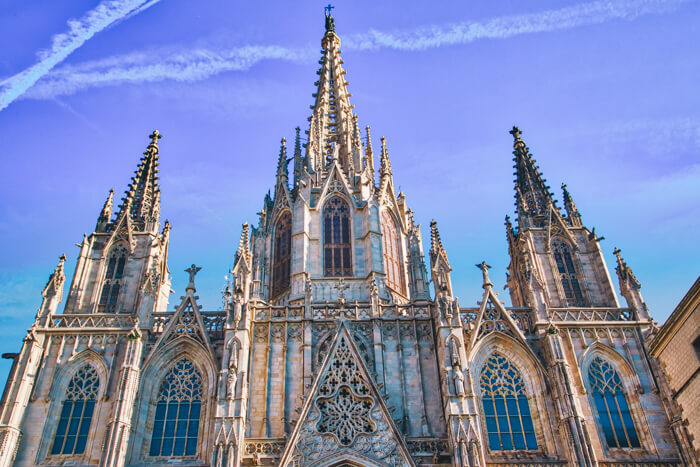
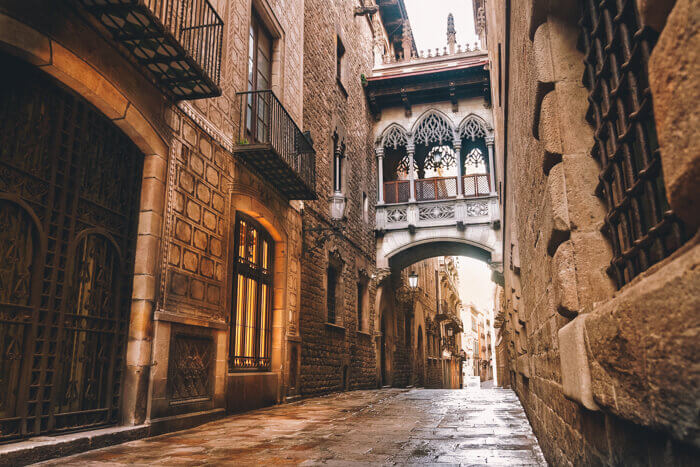
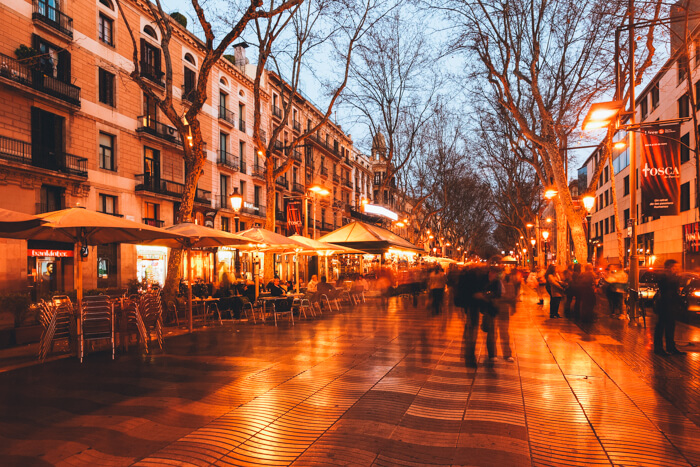
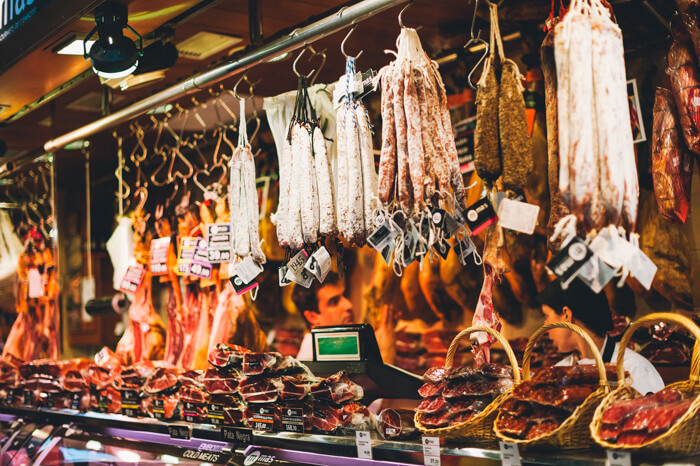
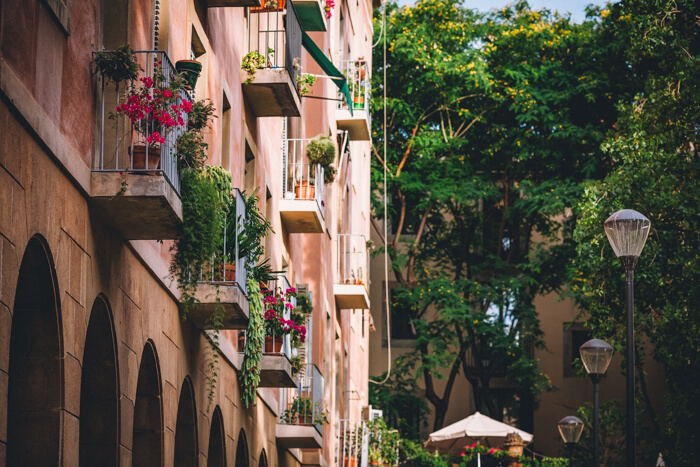
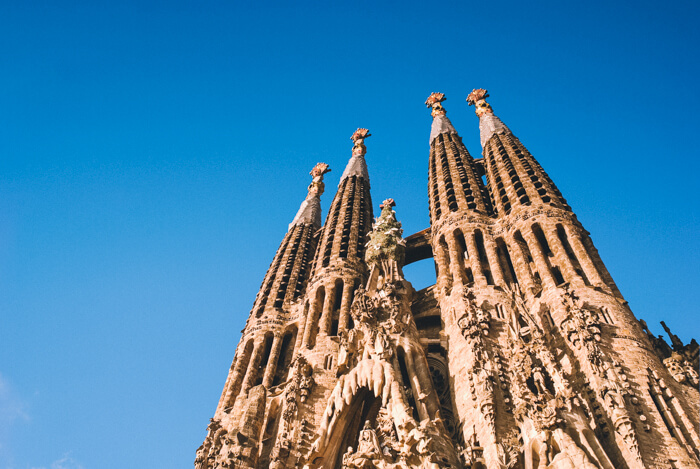
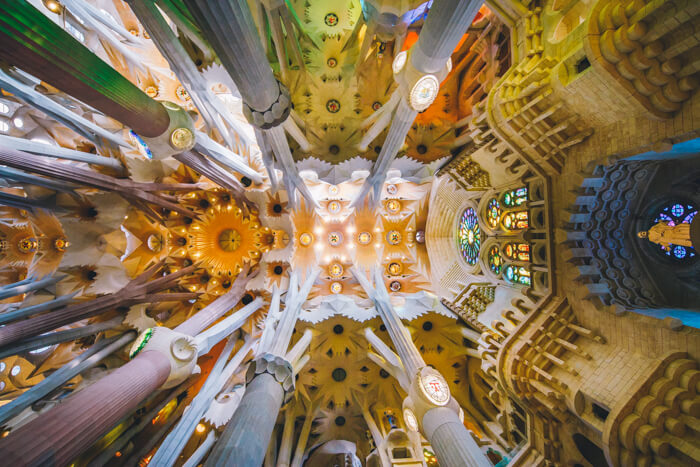
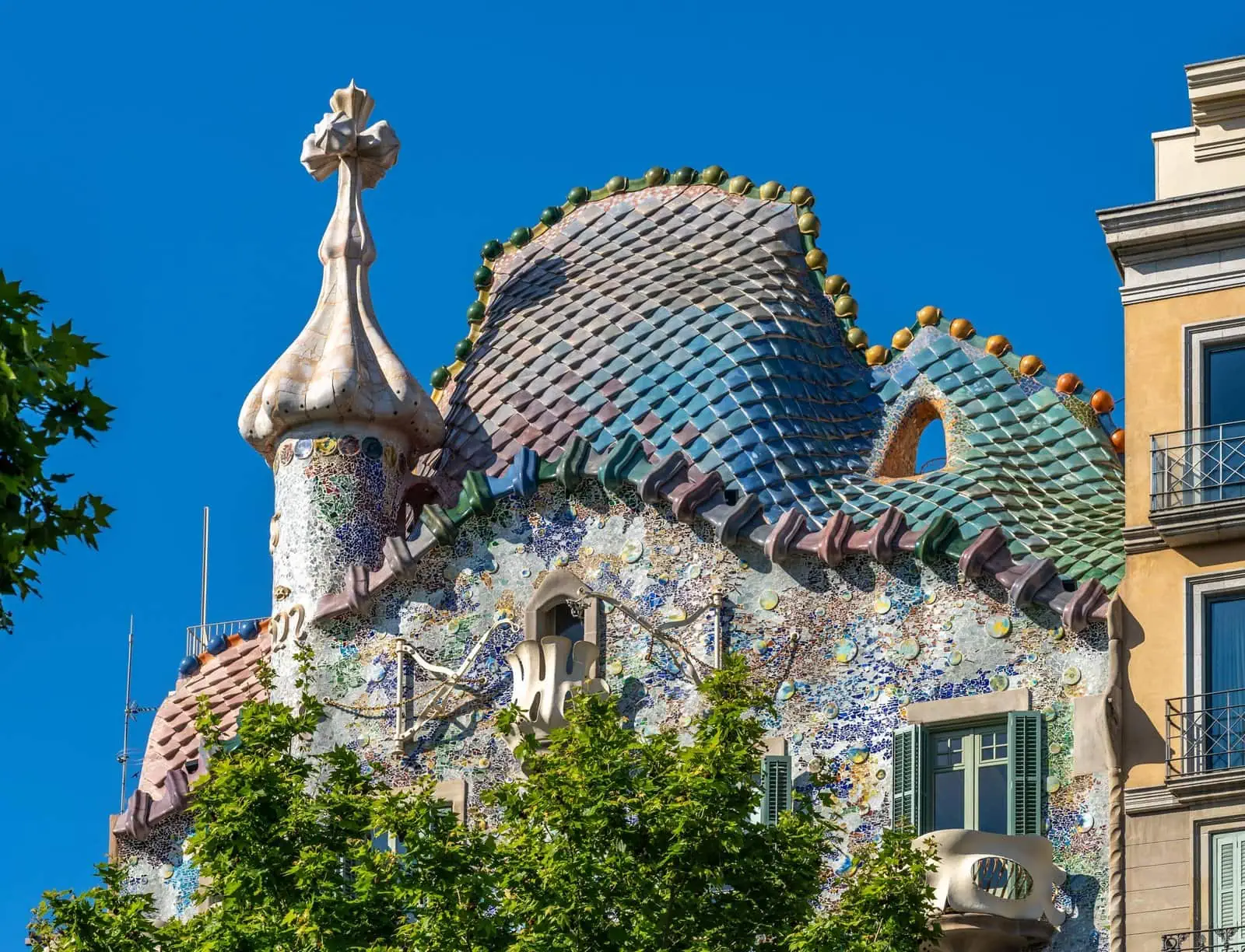
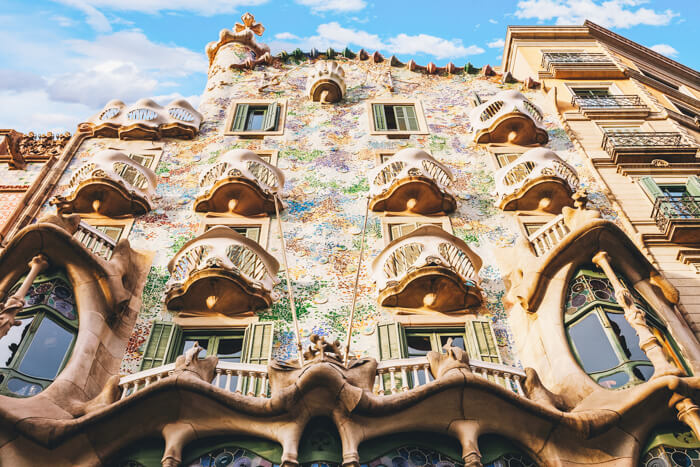
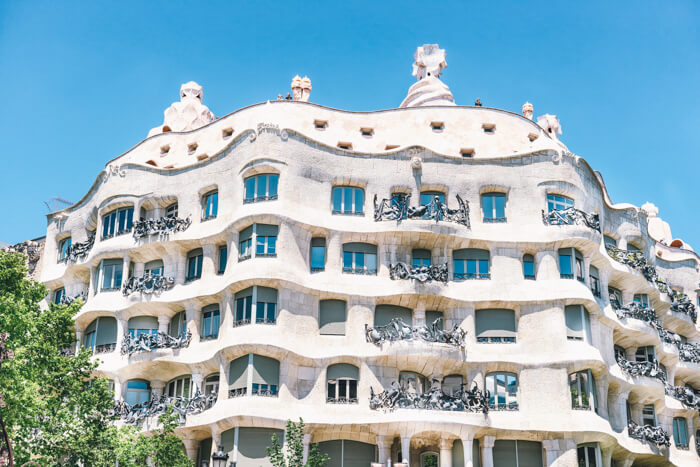
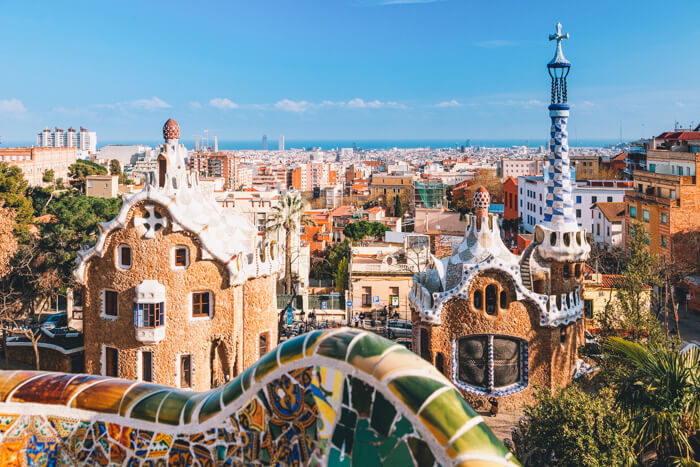
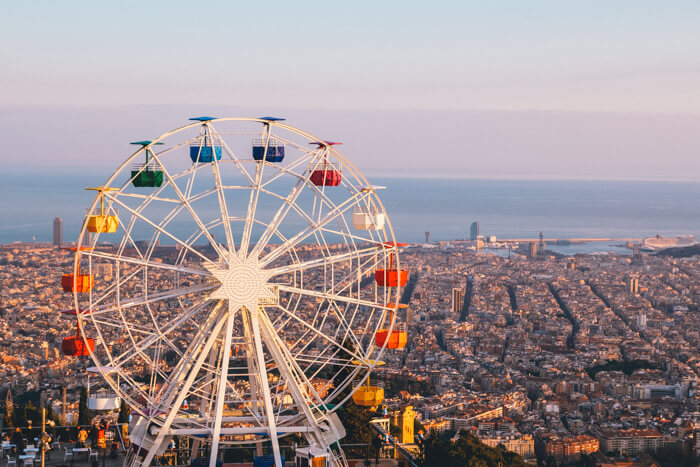
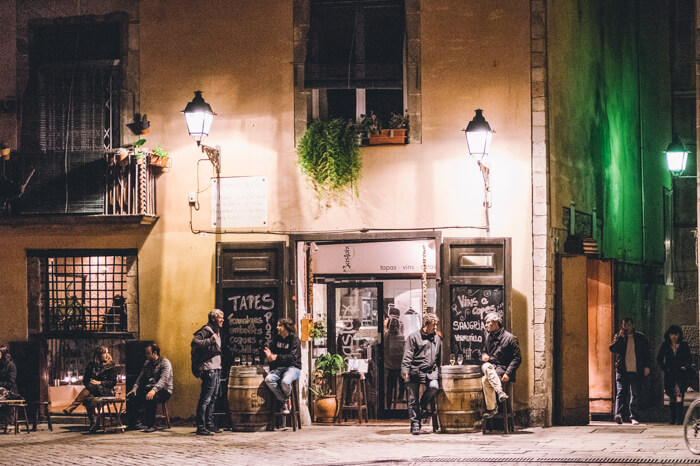
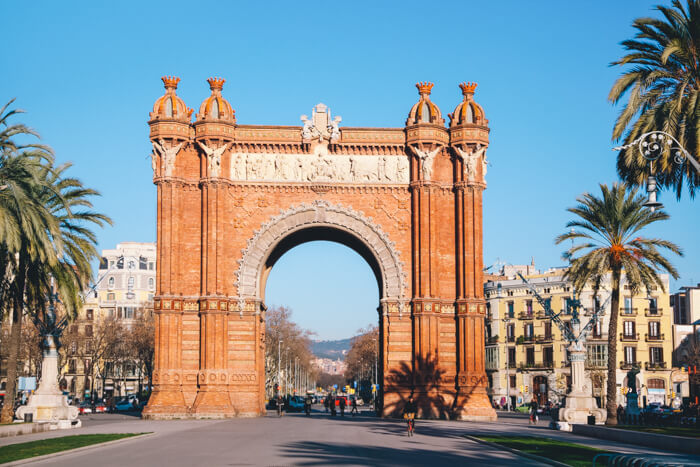
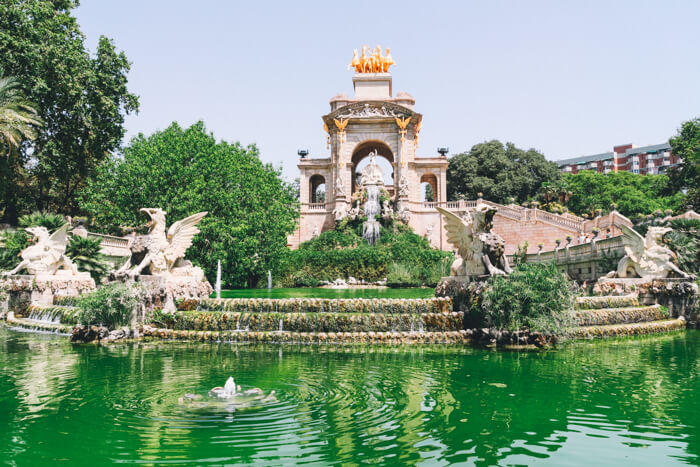

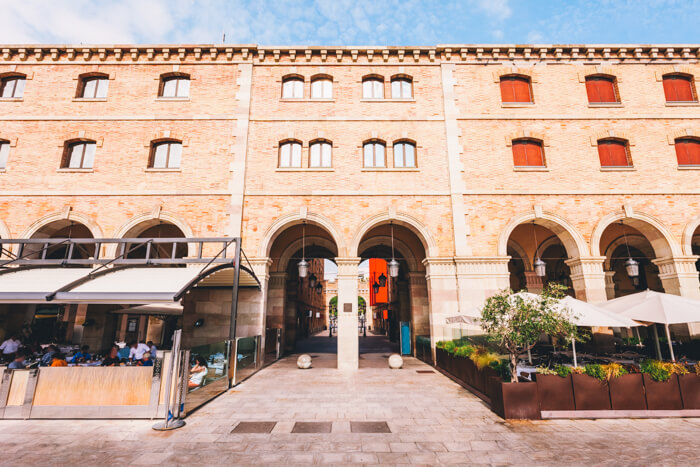
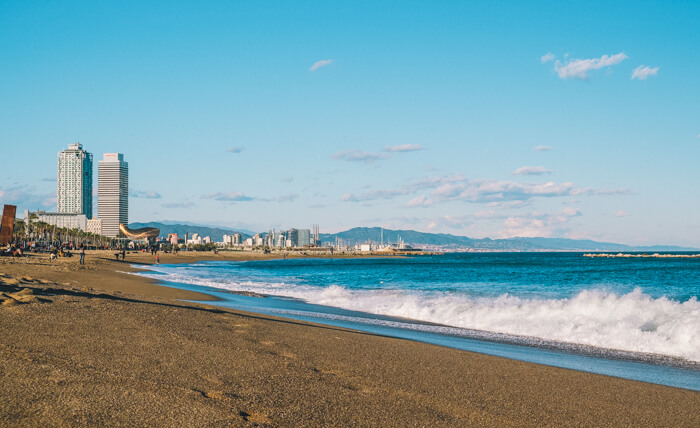
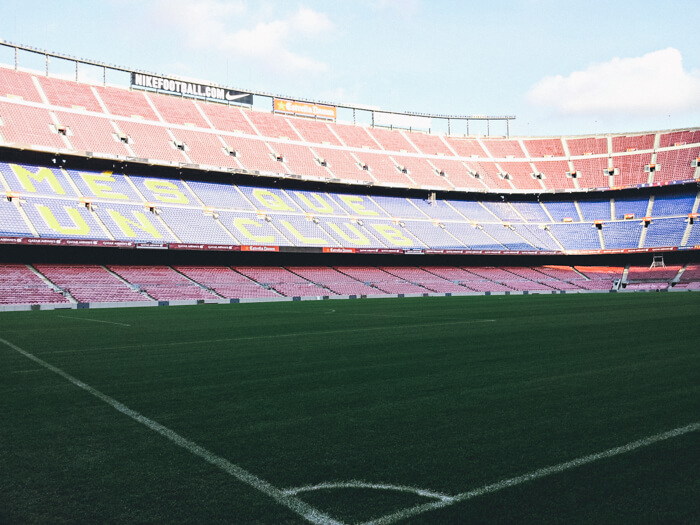
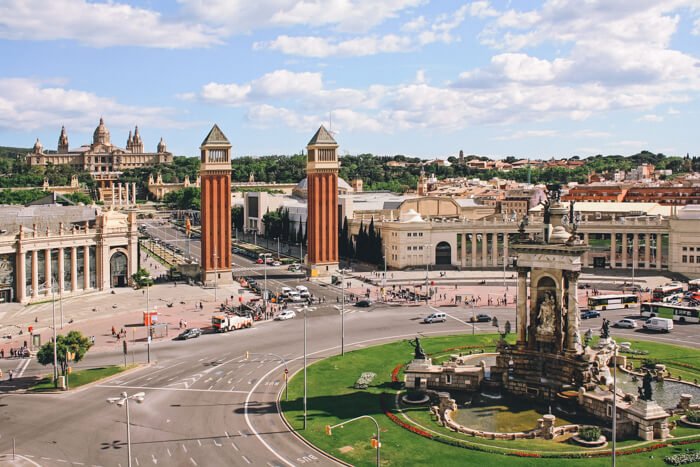
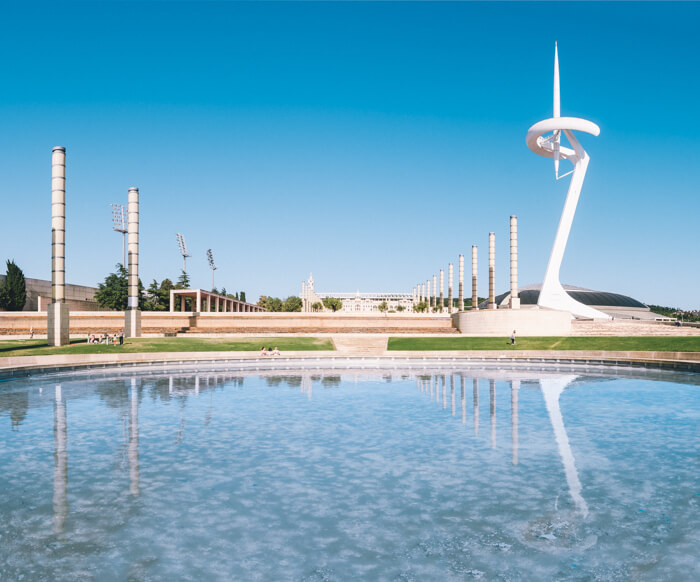
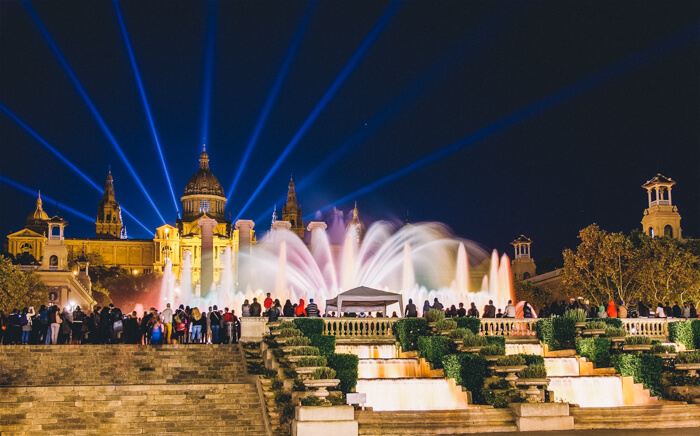
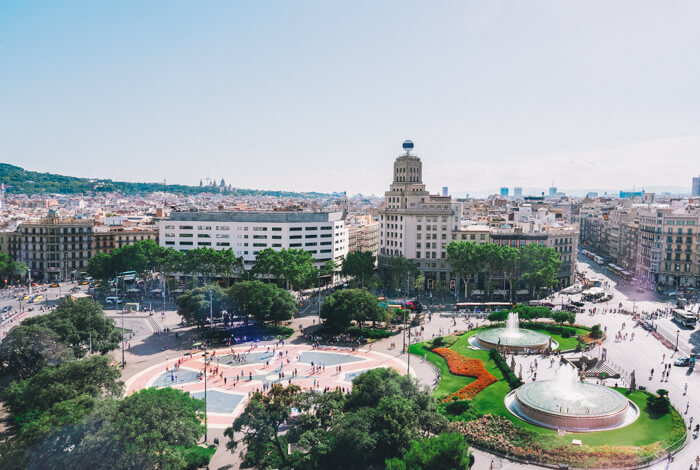
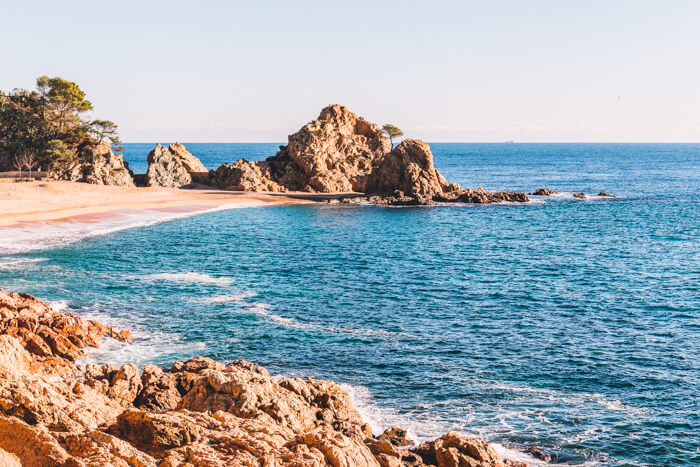
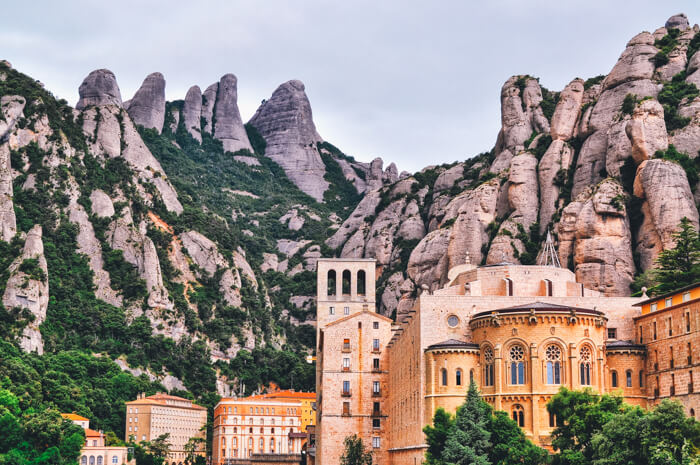
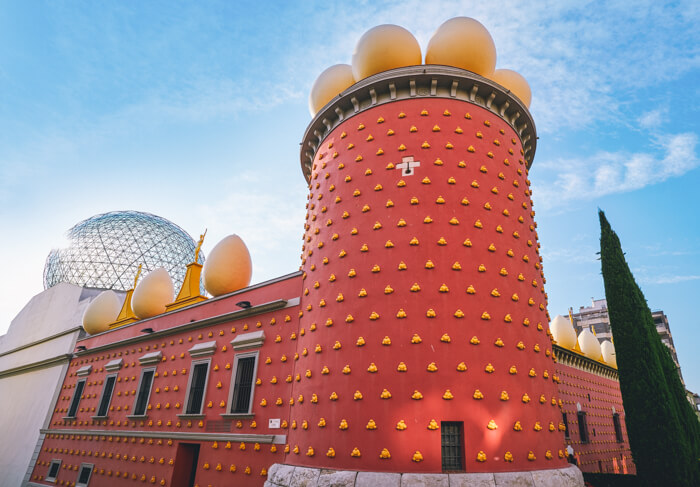
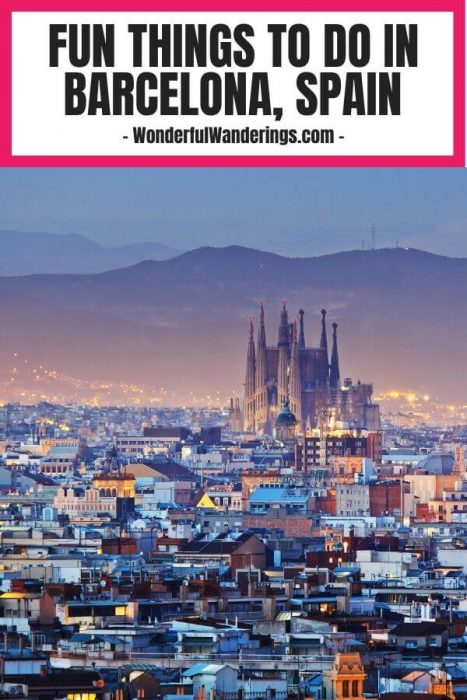
Paul Rought says
Hi Sofie
Thanks for this post. We were in Barcelona last year but just for a couple of days and so are planning the return this year for hopefully 4-5 days. This has given us fresh impetus and more ideas as to what to do on our return. We didn’t even make it to the beach last time! There and Parc Gueil are definite must dos next time round
Thanks again
Sofie says
Hey Paul,
Glad you found it useful!
Gabriela says
Thank you for the post, I found the diversity of information very useful can’t wait for my trip
One of the things you mentioned , the wineries tours, has a broken link, would you please fix / post it? I would be very interested in a wine tour if you can recommend any companies or places, I tend to avoid the main touristic ones. Many thanks! Gabriela
Sofie says
Thanks for catching that! The wine tour post is unfortunately no longer online. I removed the link.
Gabriela says
Thank you Sofie, unfortunately, the link somehow goes still to the La Sagrada – Gueli article, which is also a wonderful read :)
I hope the wine tours will show up eventually too
Sofie says
Oh, I see now what happened. I took that article offline as it wasn’t up-to-date anymore and I didn’t have the latest details.
You could check out this site: https://winetourismspain.com/244/1-day-winery-and-wine-tasting-tour-from-barcelona/
Gabriela says
Much appreciated!